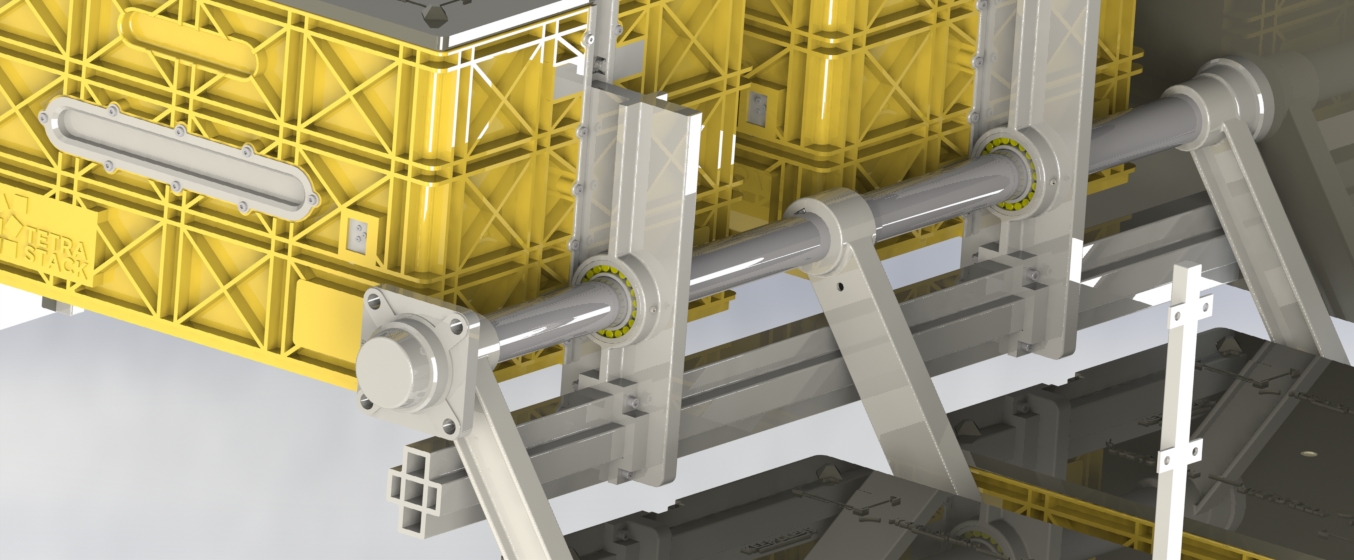



WHY TETRASTACK™
Because 5 minutes in the warehouse could make the difference between tonight and tomorrow’s flight, the difference between a dissatisfied and satisfied customer. Because a late arriving purchase equates to a lost future sale. Unlike the local supermarket, web users are not geographically bound to return to the same store despite having waited in the queue for too long. Online, your nearest competitor is a mouse click away.
WHY TETRASTACK™
Because 5 minutes in the warehouse could make the difference between tonight and tomorrow’s flight, the difference between a dissatisfied and satisfied customer. Because a late arriving purchase equates to a lost future sale. Unlike the local supermarket, web users are not geographically bound to return to the same store despite having waited in the queue for too long. Online, your nearest competitor is a mouse click away.
CONCURRENT SORTING, STORING & RETRIEVAL
In most warehouses, preliminary sorting must take place either before placement or after retrieval of a package and at some stage before outbound shipment. This is because packages share common destinations and must be distributed accordingly.
- The TetraStack system continuously optimises the placement of crates with respect to one another and the bottom mass release rows such that when the time comes, packages may be rapidly dispatched.
- Since sorting takes place in the racking system, a separate conveyor sortation system (Typically a labyrinth of conveyors and side chutes) is not required saving on overall warehouse componentry and footprint.

SAVE TIME
SAVE TIME
SAVE TIME
- Shorter travel distances and less lifting not only reduces energy usage, but decreases average throughput times and efficiencies. Travel paths are simpler and shorter.
- Bottom quick release shelving allows for rapid despatch of bulk quantities of crates at a time making for fast truck/plane/train turnaround times.

Save space
Save space
SAVE SPACE
- The wheels of the AGV turn around the body of the AGV, rather than the entire AGV turning around an axis. This saves space in the racking system as it does not need to accommodate for the diagonal size of the AGV as it rotates.
- The plastic crates have optional separators / dividers within them to better match the space requirements of smaller packages.
- Limiting empty space inside the crates reduces the need for space filling material (such as bubble wrap) and reduces movement that could result in breakages.
- The crates are designed to be stackable, saving space when not in use.

SAVE ENERGY
SAVE ENERGY
SAVE ENERGY
- Whilst the AGV is fully capable of placement and retrieval from both below and above, the primary lifting of packages in the warehouse is done by roller conveyors. Roller conveyors spin about their own axis and thus only the package itself experiences a net movement upward.
- The AGV is able to transport 4 crates instead of just one for each movement, increasing the efficiency and throughput.
- The TetraStack™ AGV typically retrieves a package from above and deposits it below. This process is gravity-fed.
- A regenerative capacitor retrieves part of this energy as the motor retards the downward movement of the lifting arm.
- The AGV does not change levels along with the parcel/package as per existing systems. (This is not to be confused with the fact that the TetraStack AGV may change floors if redistribution to a busier zone is required)
- Each package is never placed higher than is absolutely necessary because the TetraStack matrix is continuously defragmented creating the most compact stacking arrangement as close to the ground as possible. This ensures inbound packages travel the shortest and lowest distance.

SAVE MONEY
SAVE MONEY
SAVE MONEY
Other than the money saved by reduced energy consumption, there are many other purposeful design decisions that were made in order to reduce the life cycle cost of operating the TetraStack™ system. Some of these are:
- The sensors and other expensive mechanisms are found on the AGV rather than on the racking system which remains largely passive. There are hundreds of thousands of cells but only hundreds of AGVs. This is why all actuators reside on the TetraStack AGV as opposed to the racking. This in turn decreases the cost of the entire system and increases the usable space within the system.
- The system can be adapted by being scaled in any direction, whether it be to widen the system, lengthen it or increase its height. This modularity secures the possibility of future expansion without system redesign.
